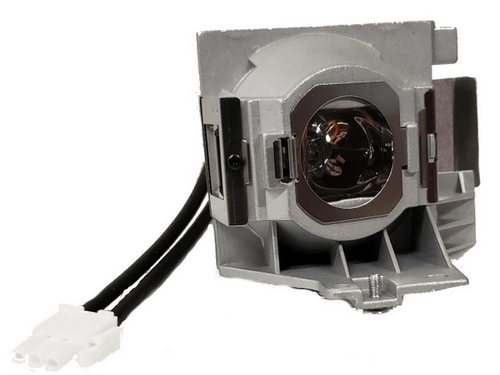Technically speaking, a lumen is, “a unit of luminous flux in the International System of Units, that is equal to the amount of light given out through a solid angle by a source of one candela intensity radiating equally in all directions.”
Simply put, lumens are brightness. The higher the lumen output, the brighter the image will be displayed. Not to be confused with wattage, which measures the energy consumption of the lamp, lumens measure the actual light output. A 100-watt incandescent (old type) lightbulb has 1,600 lumens. The lumen amount is a really important factor to consider when purchasing a new projector, or when keeping up with your current projector.
The setting in which you intend to use your projector will make a big difference in the amount of brightness you will need. Rooms that have more ambient light, (light that is already present in a scene before any additional lighting is added), like classrooms, living rooms, and businesses, require a higher output than rooms that are dark, such as home cinemas, to display the same quality images. When it comes to buying a projector, more lumens do not always mean better.
Ambient light and screen size are both important to consider when deciding how many lumens are right for you. Also keep in mind that getting the right projector will usually not be an exact science. An average home projector is somewhere under 3,000 ANSI lumens, which can easily display an 80” picture. All you need to know is a good estimate of what you will need. In order to avoid overpaying for unnecessary lumens, it’s important to note that small differences in light output will be virtually undetectable to the human eye.
For example, a projector like the Epson TW10H which has 1,200 lumens, compared to an Epson TW200H with 1,300 in the same lighting, will not look any different. However, the 1,200 lumens compared to something like an Epson Powerlite 74C with 2,000 lumens will display a noticeably different amount of brightness. In terms of screen size, the larger the screen you need to project on, the more light output you will need.
Here is a simple calculation you can go by. There should be at least 80 lumens of brightness per square-foot of screen surface. A screen that is 8×6, which would equal 48 sq. ft., would need a 4,000-lumen projector.
For home theaters with exceptionally low ambient light, you will need a minimum of 1,500 lumens. Rooms with windows, like classrooms, conference rooms, or living rooms, it is best to look for a minimum of 2,500 lumens.
As your projector begins to age, the brightness that it outputs will slowly start to decrease. For a while it will not be noticeable, but once it starts to reach about half of its lifespan, you will start to see the dimness increase. Let us look at a BenQ MX662 projector for example, it has 3,500 lumens and a lamp life of 3,500 hours. So, at about 1,750 hours, it will begin to get more dim, which indicates we might need to purchase a new 5J.J7L.001 replacement projector lamp.
There are a few ways to measure lumens. Most require a light meter tool, such as the procedure developed by the American National Standards Institute (ANSI). This includes measuring nine points in a projected image that is 100% white, with the projector being the only light source in the room. To measure the brightness of the projector rather than the light being reflected off the screen, the meter is held with its back flat against the screen, and the sensor facing the projector. The meter will measure in units called Lux. Then they use this formula to convert the measurement to lumens:
ANSI lumens = average of Lux readings X image area in square meters.Luckily for the average projector user who does not own an expensive light meter, we can now download apps on our smartphones that will do all that hard work for us! They might not be as accurate as an actual light meter, but it will give you a great estimate, which is all you need. All you will need to do is hold your phone to the light and it will measure the average amount of lumens for you.
Whether you are looking to purchase a new projector, or keeping up with your current one, lumens are a good indicator of what projector you will need, and when it’s time to replace your projector lamp.
Click over to our homepage to search for your replacement projector lamp today!


